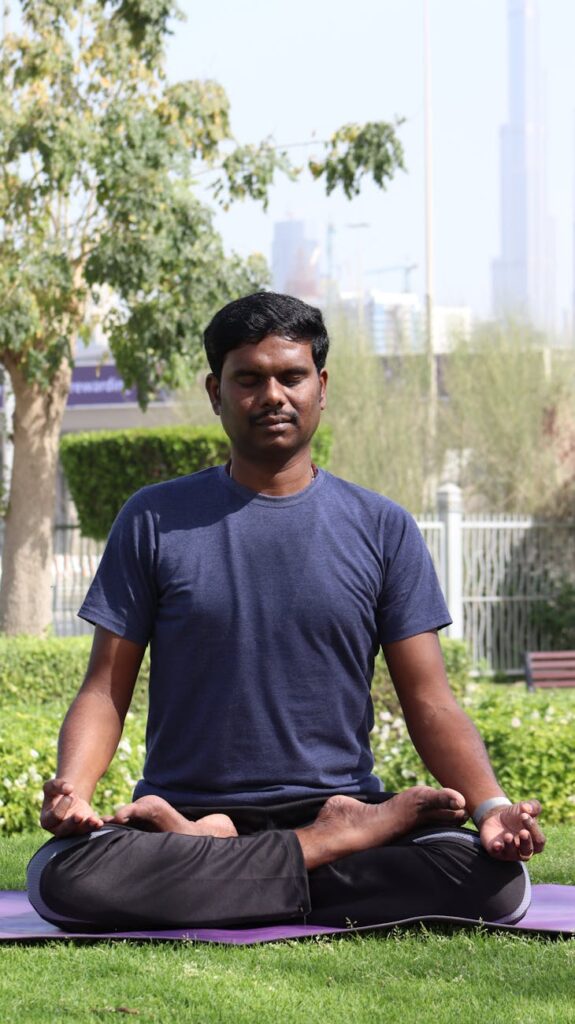What is guided relaxation techniques?

What is guided relaxation techniques?
In today’s fast-paced world, finding moments of peace can be a challenge. Guided relaxation techniques offer an effective way to help you unwind, reduce stress, and enhance your overall well-being. These methods can significantly boost your productivity and improve your mental health, making them essential tools for personal development.
Understanding Guided Relaxation Techniques
Guided relaxation techniques are structured procedures that involve someone guiding you through a process aimed at achieving relaxation and tranquility. This can involve verbal instructions, audio recordings, or even video sessions designed to help you enter a calm state of mind. By promoting relaxation, these techniques can be pivotal in managing stress and anxiety levels.
What Are Guided Relaxation Techniques?
At their core, guided relaxation techniques are approaches designed to help you relax your body and mind. Common examples include deep breathing exercises, progressive muscle relaxation, and guided imagery. Each of these methods employs visualization and sensory experiences to facilitate deeper relaxation.
For instance, if you’ve ever listened to a relaxation recording that walked you through creating a serene mental landscape, you’ve experienced guided relaxation. This practice can be done individually or in a group setting, making it versatile for different lifestyles.
How Guided Relaxation Techniques Work
These techniques work by engaging both the psychological and physiological aspects of relaxation. When you focus on calming your mind and body, your heart rate slows, blood pressure drops, and breathing becomes more regulated. This response activates the body’s natural relaxation response, countering the effects of stress.
Psychologically, guided relaxation encourages mindfulness. By directing your attention away from stressors and anchoring it to your breath or a calming image, you create a mental space where worries fade. This can lead to improved emotional regulation, making it easier to handle daily challenges.

Photo by Murugadoss Arumugam
Benefits of Guided Relaxation Techniques
The positive impacts of guided relaxation techniques are numerous. From improved focus to better emotional health, these methods can have transformative effects.
Improving Focus and Productivity
Guided relaxation techniques can enhance your concentration and overall productivity. When your mind is cluttered with stress, it can be challenging to focus on tasks at hand. By practicing relaxation, you create a mental clarity that allows you to engage more fully in your work or studies. Research indicates that regular practice can lead to improved cognitive function, making it easier to tackle complex problems.
Reducing Stress and Anxiety
One of the primary benefits of guided relaxation is its ability to reduce stress and anxiety. When you engage in a relaxation technique, your body releases tension, leading to a calm state. Techniques like deep breathing and mindfulness meditation can significantly lower cortisol levels, the hormone associated with stress. For more detailed insights, check out this resource on stress relief techniques.
Enhancing Work-Life Balance
Incorporating guided relaxation techniques into your daily routine can lead to a healthier work-life balance. When you take time to recharge, you’re more present in both your professional and personal life. This balance is essential for mental health, helping you to avoid burnout and maintain a positive outlook.
Popular Guided Relaxation Techniques
There are several guided relaxation techniques that you can easily incorporate into your routine. Each method has its unique approach and benefits.
Progressive Muscle Relaxation
This technique involves tensing and then relaxing different muscle groups in your body. It’s a straightforward way to promote relaxation by helping you become more aware of physical tension. By systematically working through each muscle group, you can release stress and cultivate a sense of physical ease.
Guided Imagery
Guided imagery is another effective technique that involves visualizing calming scenes or situations. This method engages your imagination to foster relaxation. You might envision a peaceful beach or a tranquil forest. Studies show that guided imagery can reduce feelings of stress and improve mood, making it a valuable tool for emotional wellness. For further exploration of this technique, visit Guided Imagery: Techniques, benefits, and more.
Mindfulness Meditation
Mindfulness meditation encourages you to focus on the present moment without judgment. It often includes attention to your breath, bodily sensations, or sounds around you. This practice can be a powerful tool for managing anxiety and enhancing emotional resilience. Engaging in mindfulness meditation regularly can foster a greater sense of peace and well-being.
How to Incorporate Guided Relaxation Techniques into Daily Life
Integrating guided relaxation techniques into your daily routine can be straightforward and beneficial. Here are some practical tips.
Setting Aside Time for Relaxation
It’s essential to carve out time in your busy schedule for relaxation. Even a few minutes each day can make a difference. Consider setting a specific time for relaxation, such as in the morning before starting your day or in the evening to wind down. Treat this time as a non-negotiable appointment for your mental health.
Utilizing Technology and Apps
Many apps and online resources can assist with guided relaxation. From audio recordings to video sessions, technology can make these techniques more accessible. Popular options include Headspace and Calm, which offer guided sessions tailored to various needs. These tools can be particularly useful for those new to relaxation techniques or who prefer guided support.
Conclusion
Guided relaxation techniques offer numerous benefits for enhancing your productivity, reducing stress, and achieving a better work-life balance. By understanding these techniques and incorporating them into your daily routine, you can cultivate a greater sense of calm and well-being. I encourage you to explore various methods and find what resonates best with you. Whether it’s through progressive muscle relaxation or mindfulness meditation, there’s a technique out there to help you thrive. Start your journey toward relaxation today!